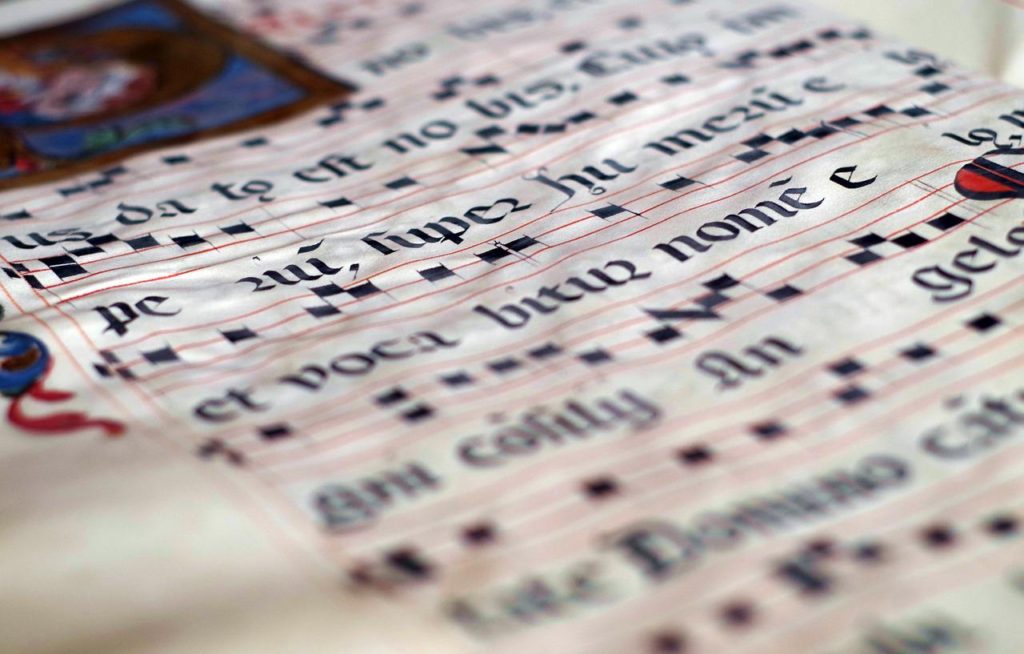The chant (Quem Nunc Virgo Peperit) that you’ll practice in Singing Shape Note Solfege Dorian Melodies comes from a very old source. According to Rev. G. R. Woodward, “[The] melody (XI or XII Cent.), in the Dorian mode, [comes] from a Palencia Antiphoner…” (The Crowley Carol Book 3).
Chant music has a sense of ancient mystery to its sound. For more chant manuscripts click here.
Mediaeval melodies didn’t have bar lines. This explains the imposing looking time signatures, which help the melody to have a freely flowing quality. Just sing the solfege syllables (below the melody in the example above) to a steady beat.
Make sure to take breaths at the fermatas as this will allow you to support your pitch. If you don’t take a good breath, your notes will go flat.
The song track uses synthetic voices rather than actual voices. Research has shown that this will help with the ability to identify and produce absolute pitch information. For more information, read Why Use a Synth Voice Instead of Real Voices.
For the complete chant, see the following video.


